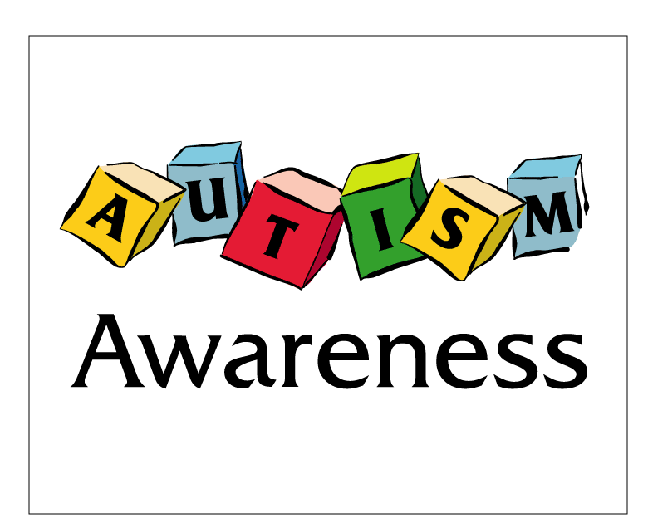by Gowher Nazir
Every autistic child has the right to lead a happy, fulfilling life. Healthcare professionals, parents, and teachers are responsible for supporting and motivating them, treating them equally alongside their peers.
 Diversity, in its myriad forms, is widely celebrated worldwide. Yet, a profound imperative remains to recognise and understand the spectrum of human experiences. Within this rich tapestry lies a complex neurological condition affecting millions globally: autism spectrum disorder (ASD). The World Autism Awareness Day, observed on April 2, raises awareness, promotes inclusivity, dispels misconceptions, and embraces neurodiversity.
Diversity, in its myriad forms, is widely celebrated worldwide. Yet, a profound imperative remains to recognise and understand the spectrum of human experiences. Within this rich tapestry lies a complex neurological condition affecting millions globally: autism spectrum disorder (ASD). The World Autism Awareness Day, observed on April 2, raises awareness, promotes inclusivity, dispels misconceptions, and embraces neurodiversity.
Neurodiversity posits that autism is not an illness to be cured but a distinctive way of thinking, processing, and behaving, differing from the neurotypical population. It advocates acceptance of this diversity rather than viewing it as a fault in neurocircuitry. Noteworthy individuals such as Albert Einstein, Isaac Newton, and Charles Darwin, as well as public figures like the character Sheldon from the television series The Big Bang Theory, exemplify the potential of autistic individuals to achieve remarkable feats by nurturing their unique perspectives rather than treating them as afflicted.
Autism Spectrum Disorder (ASD) encompasses two primary domains: social interaction and communication, and repetitive behaviours. In the former domain, individuals may exhibit unresponsiveness to their names, lack of eye contact, delayed or abnormal speech, limited facial expressions, a preference for solitude, disinterest in activities, echolalia, or difficulties in understanding and expressing emotions. They may also display passive-aggressive or disruptive behaviours in communication.
The latter domain manifests through repetitive movements such as spinning, rocking, or flapping, the development of specific habits, heightened sensitivity to changes resulting in agitation, engagement in self-harming behaviours like biting or hitting oneself, uncoordinated body movements, fixation on particular objects without understanding their purpose, varying intellectual capabilities, and heightened sensitivity to sensory stimuli like sound and light, contrasting with potential insensitivity to pain or temperature changes.
To perceive autism not as a disorder but as a distinctive cognitive and behavioural paradigm, it is crucial to grasp how autistic children perceive themselves and interpret others’ perceptions of them. Let’s delve into the inner world of an autistic child.
At a certain point in their development, autistic children become cognisant of their divergence from neurotypical peers. This realisation often carries negative connotations, fostering feelings of anxiety, isolation, diminished self-worth, and frustration. They may grapple with intense emotional reactions, viewing themselves through the lens of societal norms and expectations, which can impede acceptance of their unique identity.
Many autistic children face demeaning treatment, humiliation, and rejection from their peers, and some may even become targets of bullying. These experiences can lead to a distorted self-perception, where they may erroneously believe themselves to be disabled or flawed. Despite often possessing high levels of intelligence, they may struggle to articulate their identity to others and themselves, often responding with the phrase “I don’t know.”
Acceptance of their uniqueness rather than viewing themselves as neurodivergent is key for individuals with autism to lead fulfilling lives. Support from family, friends, and teachers during their formative years is crucial. It’s imperative for these influential figures to help them recognise that they are not disordered and to instil pride in their distinctiveness.
While ASD cannot be prevented, early identification and intervention can positively impact behaviour, speech, language development, and communication skills. Increasing awareness of the initial signs and symptoms in educational, medical, and community settings can facilitate early detection.
Once identified, interventions should be initiated by various healthcare professionals, including speech therapists, applied behaviour analysts, occupational therapists, and developmental psychologists. Collaborative efforts between healthcare providers and educators can help dispel stigmas and stereotypes associated with autism through awareness programs.
Every autistic child has the right to lead a happy, fulfilling life. Healthcare professionals, parents, and teachers are responsible for supporting and motivating them, treating them equally alongside their peers. Encouraging pride in their uniqueness rather than viewing them as flawed or divergent is essential.
(The author is a speech pathologist. Ideas are personal)














